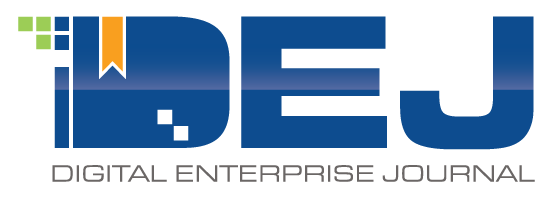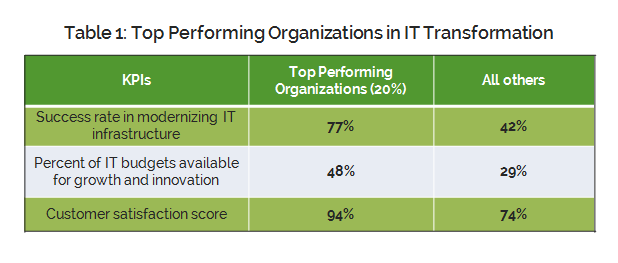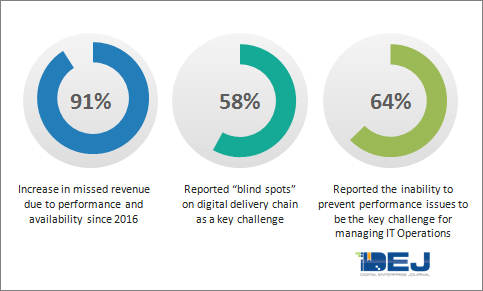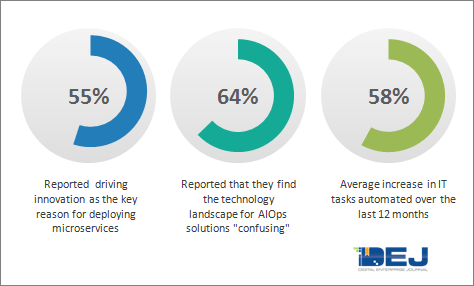This article is an overview of key briefings that DEJ conducted with technology vendors in March 2020. The article analyzes their announcements, market position and an alignment with key findings of DEJ’s research.
Accedian
DEJ’s research on network performance monitoring (NPM) shows that lack of application level visibility (52% of organizations) and lack of visibility into user experience (68%) are some of the key challenges for network performance. Addressing these two challenges are key areas of Accedian’s Skylight solution value proposition. One of the core strengths that the company is offering are robust IT performance analytics capabilities that are enabling service providers and enterprises very granular views of their performance in a scalable fashion.
As most APM solutions are focusing on code level visibility into application performance, IT Operations teams find the metrics from horizontal, network-based APM solutions more useful, and that market opens up a lot of opportunities for companies like Accedian. Fifty-eight percent of organizations in DEJ’s research reported that the network is playing a critical role in digital transformation, while 41% of these organizations reported that the role of NPM solutions has become more important over the last 12 months. As a result, a new type of NPM and APM convergence powered by strong analytics and visualization capabilities is becoming increasingly important.
Aternity
In July of 2019, Riverbed spun-off Aternity as an independent business division focused on digital experience management (DEM). In the meantime, Aternity added a number of capabilities, to its already unique and strong set of competencies for monitoring user experience, that very well aligned with key requirements of forward-thinking organizations. These capabilities can be summarized in the following areas:
- DEJ’s research shows a 2.1x increase in the number of organizations using technology to differentiate from competitors since 2017. Aternity not only provides an in-depth view into true user experience, but also allows organizations to benchmark their performance and compare it to competitors by using insights from more than 3 million end-points monitored.
- 74% of organizations in DEJ’s research reported that they are not able to quantify the impact of IT on business goals. Aternity’s solution not only provides a strong impact in some of the key business areas, but also allows customers to view the monetary benefits of deploying the solution. As a result, organizations are able to make educated business decisions in areas, such as device refresh and software licensing, that lead to significant cost savings.
- 71% of organizations in DEJ’s research are reporting that the metrics IT is using do not reflect true user experience. The research also shows that TPOs are 2.2 times more likely to have the ability to monitor user experience at the point of interaction with digital service, as compared to all other organizations. Aternity’s ability to provide that type of capability enables organizations to not only gain insight into a true user experience, but also correlate application and device performance to user activity.
Blameless
DEJ’s recent research shows that top performing organizations (TPOs) in managing IT transformation – as defined by three KPIs in Table 1 – are 81% more likely to have a strategy for enabling Dev and Engineering teams to focus on creating a business value. As a result, these organizations are experiencing a 32% higher customer satisfaction score as compared to all others. The research also shows a 3.3x increase in SRE adoption since 2017. Blameless is well positioned to address both of these trends as the company’s SRE platform provides a unique approach for enabling a full lifecycle of IT incident management and includes strong capabilities for reducing some of the key challenges reported in DEJ’s research, such as reducing technology debt and the amount of unplanned work.
Workflows in Blameless’ platform follow the practices of TPOs, especially in the areas of collaboration and knowledge management, taking a proactive approach in dealing with performance issues and creating service level objectives (SLOs) that are aligned with business goals. As more organizations are reporting that their responsibilities for production performance are “shifting left” and are looking to provide SRE, DevOps and engineering teams with capabilities for ensuring the delivery of better code faster, but with higher reliability, Blameless is well positioned to be one of the key vendors in this emerging market.
Catchpoint
DEJ started conversations with Catchpoint while the company was still in stealth mode and this conversation was a regular update centered around the company’s results in 2019 and early 2020. Catchpoint experienced significant growth in 2019 that can be attributed to emerging market requirements.
Synthetic monitoring might be a mature technology, but market developments are creating new opportunities for providers of these technologies and Catchpoint has been able to take advantage of them. Fifty-eight percent of organizations in DEJ’s upcoming study on New Generation Monitoring reported “blind spots” on the digital delivery chain as a key challenge. Catchpoint provides a unique mix of capabilities for monitoring each element of the digital delivery chain – from cloud and infrastructure, third-part services, backbone, and last mile to strong capabilities for both synthetic and real user monitoring.
Additionally, the emergence of edge computing and the increased importance of employee experience are opening new market opportunities for Catchpoint. DEJ’s recent study shows a 64% increase in importance of employee experience over the last 18 months. This represents a major shift from the traditional approach for user experience monitoring, where the focus was mostly on employee productivity. With new trends in digital economy, organizations are increasingly seeing employee experience as a source of competitive advantage and Catchpoint’s ability to capture a robust set of metrics in this area represents a major opportunity for 2020.
CloudFabrix
On a high level, four key value areas of AIOps solutions has been: reducing alert noise, root cause analysis and preventing and resolving performance issues. CloudFabrix not only provides strong capabilities in each of these areas, but its solution includes strong competitive differentiators across each of these segments. 64% of organizations in DEJ’s recent research reported the inability to prevent performance issues to be the key challenge for managing IT Operations. Additionally, the research shows that the lack of actionable context for monitoring data is a key challenge for 61% of organizations. Addressing these two major issues for user organizations in a unique fashion is one of the key strengths of CloudFabrix.
One of the key strategies that DEJ’s IT transformation research identified is that everything that IT does has to be translated to business outcomes. Ability to continuously track operational and business outcomes and provide “outcomes assurance” is one of the key capabilities that CloudFabrix provides. This capability is not only a strong differentiator for CloudFabrix, but also an instrument for IT Operations for having a strategic impact on their business organizations.
Gremlin
DEJ’s new study shows an 8.6x increase in software releases and upgrades since 2016. The research also shows a 91% increase in missed revenue due to performance and availability over the same period of time. As innovation and speed to the market is becoming increasingly important in gaining a competitive advantage, organizations need to ensure that new digital services are meeting increasing customer expectations for experience and engagement. Gremlin’s unique approach for enabling engineering teams for creating a business value while reducing performance issues in production is well aligned with the trend of transforming the IT for digital economy. The company’s “chaos engineering” approach enables organizations to create a controlled environment that reveals weak spots in their systems and helps organizations to identify potential performance issues before users are impacted. Also, Gremlin’s solution is that it is easy to deploy and manage and has a short time to value, while meeting all of the key security and compliance requirements.
DEJ’s study shows that 41% of organizations are looking to extend code feedback loops into production and are increasingly realizing that QA gates are not sufficient to ensure optimal user experience. “Digital Transformation” has become one of those terms that are overused and, therefore becoming diluted. However, organizations that are having the most success in digital transformation are defining this term as – using technology as a competitive advantage with the core focus on customer experiences. Gremlin’s unique approach enables practices of these digital transformation leaders.
Instana
DEJ started conversations with Instana during the company’s very early days and it is impressive how fast the company went from being a start-up to a true leader in the APM market. That can be contributed to: 1) the company’s vision, unique technology and ability to execute; 2) how quickly market requirements changed; 3) the company’s focus on continuous innovation. The briefing was centered around imposing 26 technology releases that Instana introduced since January of 2019 that are well aligned with key findings of DEJ’s research.
DEJ’s study shows a 4.5 times increase in the number of organizations making software a core part of their business strategy since 2017. Additionally, 55% reported driving innovation as the key reason for deploying microservices. However, as DEJ’s upcoming study – “18 Key Areas Shaping IT Performance Markets in 2020” – shows, managing microservices and containers is changing the game when it comes to ensuring optimal IT performance. Instana’s solution is well aligned with key requirements of managing modern environments in each of the 3 key areas:
- Selection criteria – short time to value and resources required for management
- Technology requirements – automated discovery of elements and interdependencies, helping organizations to understand the impact of new deployments, etc.
- Focus on business outcomes – service-centric approach for performance management, speed to market at optimal performance, etc.
Moogsoft
Moogsoft has been a thought leader and a pioneer in bringing the concept of AIOps to the market. The company’s vision of AIOps becoming the key for addressing top IT performance challenges has proven to be on point, as DEJ’s research shows a 28% increase in IT tasks that are not humanly possible to complete at an optimal level over the last 12 months. As organizations are increasingly understanding that AIOps capabilities are no longer “nice to have”, but are becoming a necessary requirement for completing daily tasks, Moogsoft is taking actions to maintain and grow its leadership position in what is becoming a more mature AIOps market.
In 2019, Moogsoft made major strides in growing its customer base, revenue and market presence, as well as heavily investing in technology and new capabilities. However, 64% of organizations in DEJ’s research reported that they find the technology landscape for AIOps solutions “confusing” and Moogsoft is taking a strategic approach to be ready for both opportunities and threats that the maturing of AIOps brings. Strong proof points about the value that Moogsoft provides coming from their growing customer base and the business improvements that these organizations experienced are helping the company cut through the noise and focus on driving business outcomes (improved customer satisfaction, cost reduction, etc.). That is the right approach to differentiate in a market where close to a hundred vendors are using the term AIOps in their messaging, but very few of them directly compete with each other.
OpsRamp
On February 25th, OpsRamp announced their 2020 Winter Release. The release includes a number of new capabilities, but 3 of them really stood out from the alignment with user requirements perspective:
- OpsRamp’s strategy for AIOps is to continuously enhance their capabilities and in areas and use cases where users see the most value. 47% of organizations in DEJ’s research reported lack of confidence in logic and algorithms of AIOps solutions as a key obstacle for deployment. This is mostly due to the fact that organizations are looking to gain better understanding of how underlining technologies of AIOps solutions work before they can trust them with managing some business critical tasks. New capabilities of OpsRamp OpsQ solution are addressing this concern by improving organizations’ ability to manage alerts in stages. The stages that this release is addressing include new capabilities for: automated recommendations for alert escalation, alert seasonality patterns and providing different views into key statistics around alert volume, correlation and diagnostics. This approach is not only addressing some of the key concerns around deploying AIOps by allowing users flexibility and power to leverage AIOps in the way that is the best fit for their needs, but it’s also hitting on some of the key pain points for managing alerts and events.
- Thirty-nine percent of organizations in DEJ’s research reported the lack of a unified view of multi-cloud environments as one of the key challenges for getting the most business value from their cloud strategies. OpsRamp’s release includes several capabilities for addressing this challenge with the most significant one being a live topology context for Microsoft Azure and Google Cloud Platform.
- OpsRamp is not playing in the market for digital experience monitoring (DEM), but it provides synthetic monitoring capabilities and keeps building out this competency. One of the key strengths of OpsRamp offering is the company’s service-centric approach for managing IT performance and enhancing its ability to monitor performance from the end-user’s perspective and enables them to provide a unique, single-platform approach that includes visibility capabilities in each of the key areas that impact a business service.
Pliant
The company was started in mid-2018 and came out of a stealth mode in mid-2019 with a very unique value proposition and technology capabilities. However, Pliant’s vision of where the IT is headed is already proving to be on point and the company is well positioned to capitalize on requirements of transforming IT environments. Pliant’s solution allows organizations to automate their IT processes and tasks with little or no-code capabilities. The solution is applicable to a broad range of use cases and provide a service-centric proactive approach for reducing the complexity of managing IT.
DEJ’s research shows a 58% average increase in IT tasks automated over the last 12 months, while TPOs are 2.2x more likely to be automating their IT processes end-to-end. These trends are playing to Pliant’s core strengths and, with the company rapidly adding new out-of-box capabilities and workflows, it has become an enterprise solution with a robust set of capabilities that can benefit both IT practitioners and executives. Since it has officially been launched, in a short period of time Pliant was able to establish strong partnerships with a number of IT departments and support a variety of stakeholders and technology initiatives.
StackState
StackState provides an AIOps platform that is addressing some of the key challenges of both IT Operations and business performance. DEJ’s recent study “The Roadmap to Becoming a Top Performing Organization in Managing IT Operations” shows that TPOs are 68% more likely to correlate IT performance and business metrics. As a result, these organizations are 66% less likely to experience revenue impacting performance incidents. This is one of the core strengths of StackState’s platform, as it allows organizations to ingest data from a variety of both IT and business sources.
The company’s capabilities play especially well in complex environments that are deploying a large number of monitoring solutions while still not having full visibility into the health of business services. StackState allows organizations to correlate data from different sources and not only manage their IT from the business perspective, but also be able to quickly pinpoint a cause of performance degradations.
StackState’s solution is especially effective in dynamic and hybrid environments (cloud, microservices, etc.) as it provides strong capabilities for quickly identifying changes in service topology and adjusting to new services that are being launched.
















